Table of Contents
How is fertiliser for feeding apple trees helpful? Apple trees have lovely flowers and delectable fruit. But planting apple trees and waiting for nature to take its course won’t produce healthy apple trees.
Understanding when and how to fertilise apple trees is one of the most crucial aspects of generating a plentiful harvest. Fertilisation is critical for supplying the nutrients for growth, enhancing fruit quality, and boosting resistance to pests and diseases.
Apple trees need a lot of energy, annual fertilisation, and trimming to concentrate their efforts on generating a plentiful yield. They use most nutrients, although they consume a lot of potassium and calcium.
This article will cover various topics, including the value of fertilising apple trees, how to make fertiliser, how to fertilise an apple tree, indicators of insufficiency, and more.
The Importance of Fertilisers
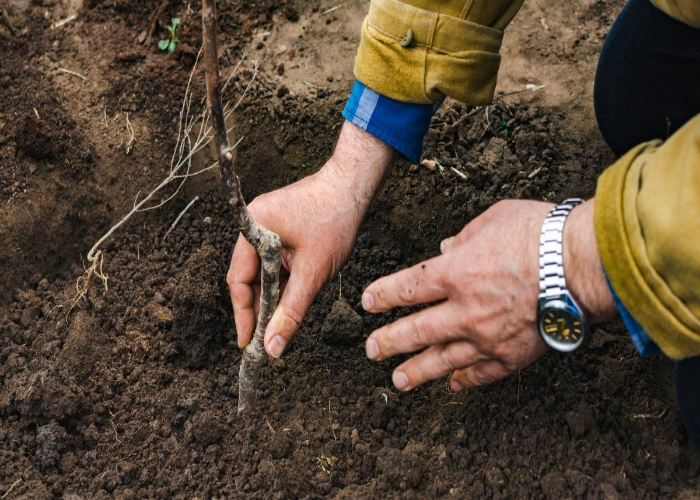
Nitrogen, phosphorus, and potassium are essential for healthy growth and development. Plants utilise them to make chlorophyll (for photosynthesis) and construct proteins, carbohydrates, and other molecules.
Fertilisers for feeding apple trees may contribute to better soil structure and water-holding capabilities and supply nutrients, resulting in stronger root systems and more robust development.
Note: It is strongly suggested that a soil analysis be performed to ascertain the present soil pH and nutrient availability.
Nutritional Requirements for Apple Trees
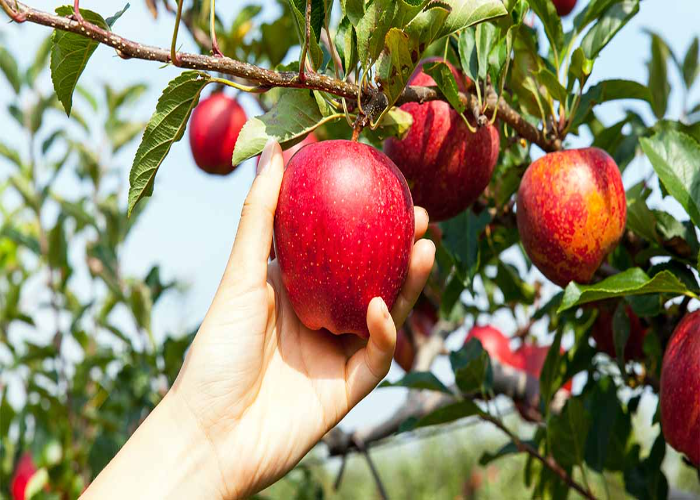
The following are the essential nutrients apple trees require:
Nitrogen: Apple trees may grow slowly, have little leaves, and have pale or yellowish foliage when nitrogen levels are low, resulting in lower fruit output and worse-quality fruit. Nitrogen fertilisers for feeding apple trees should be used sparingly and in the right quantities since too much nitrogen may cause excessive vegetative growth, delayed ripening, and poor fruit quality.
Phosphorous: Photosynthesis, flowering, energy transmission, and root growth are just a few of the vital physiological activities in which phosphorus plays a role. By encouraging cell division, boosting fruit size, and enhancing fruit quality, phosphorus also plays a crucial role in the growth and maturity of the fruit.
Potassium: Photosynthesis, controlling water flow, and coping with stress depends on potassium. Additionally, it is essential for the growth and maturity of fruit and for enhancing fruit quality, size, colour, and taste. However, too much potassium may result in calcium and magnesium imbalances, among other minerals.
Tips You Should Know Before Fertilising Apple Trees
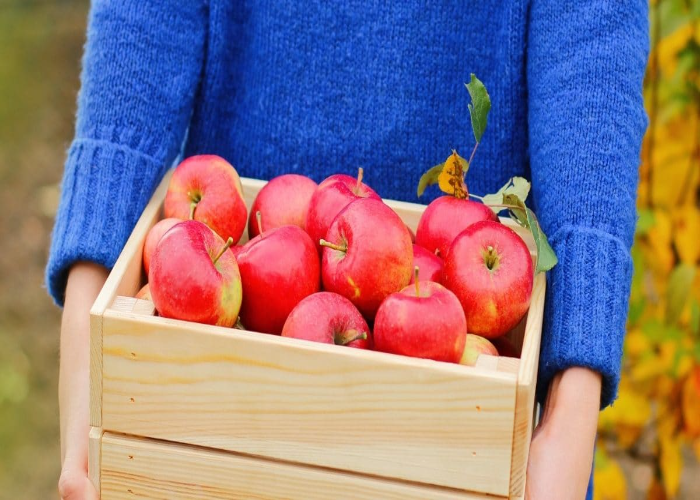
When and how should apple trees be fertilised? While fertilising an apple tree, it’s essential to consider its age, the kind of fertiliser used for feeding apple trees, and when to administer it.
- Age of Tree: Apple trees should get annual fertilisation at 3 years old and until 10. You may then limit fertilising to once every two years.
- Type of Fertiliser: Utilise a 5-10-10 or 6-24-24 fertiliser, both low in nitrogen.
- Ideal Time: The best time to fertilise is spring, just before growth resumes.
Before fertilising your apple trees, consider the following advice:
- Have your materials ready.
- You’ll need a fertiliser spreader, some protective gloves, and a couple of bags of tree fertiliser.
- Take the time to read the fertiliser’s directions.
- You shouldn’t overuse a product since the recommended application rates vary.
- Don a pair of gloves and sufficient fertilisers for feeding apple trees (as specified by the package’s instructions) and fill the spreader.
- Apply the fertiliser along the tree’s drip line, the area between the outermost branches and the trunk where most of the tree’s roots reside.
- It will burn if it gets on the tree’s bark or leaves.
- Water heavily after applying it to ensure the fertiliser reaches the roots.
Preparing Fertiliser for Apple Tree
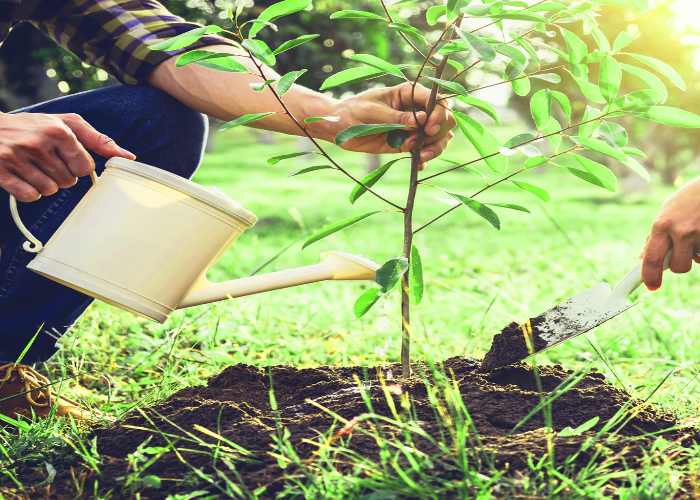
Organic and inorganic materials are the two primary options. Compost manure and bone meal are two examples of organic fertilisers used for feeding apple trees. Both dry and liquid forms of inorganic fertilisers, often derived from synthetic chemicals, are available. For every inch of trunk diameter (measured at 4 feet above ground), 1/2 pound of real nitrogen should be applied annually.
In its first year, apply one pound of nitrogen fertiliser to a young tree with a 2-inch trunk diameter. Then apply three pounds of nitrogen fertiliser annually to an elder tree with a trunk diameter of six inches.
The standard recommendation for fertilising an apple tree is to use 1 pound of nitrogen-based organic fruit tree fertilisers for feeding apple trees every year has existed. Ensure not to use more than three pounds of organic fertiliser on an apple tree annually. The best time to fertilise is in the spring, just before new growth appears.
- Look for a spot far from water sources, such as a driveway or sidewalk, to spread the apple tree fertiliser.
- Combine the compost, manure, and peat moss in an enormous container, such as a wheelbarrow or bucket.
- To make a uniform mixture, add water until the ingredients are moist but not wet and stir well.
- Distribute the fertiliser around the apple tree’s trunk and roots, but be careful not to get any on the leaves or branches of the plant.
How Is Fertiliser Applied to An Apple Tree?
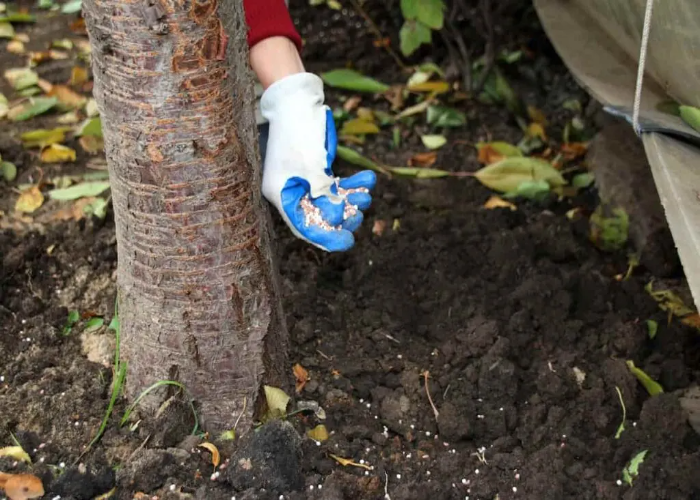
Trees need regular fertilisation to be healthy and vigorous. For feeding apple trees, proper fertiliser application may make all the difference between a flourishing tree and a failing one. Apple trees may get fertiliser by top dressing, side dressing, or spread treatment.
When fertiliser is applied, it is either “top dressed” around the tree’s trunk or “side dressed” along the tree’s drip line. The results are much more beneficial by spreading fertiliser across a wide area around the tree, as in a broadcast application.
Some apple tree fertilisation pointers are as follows:
1. Picking the Best Fertiliser
Among the various fertilisers available for feeding apple trees, the one you choose should be made with trees in mind. For optimal growth, apple trees need a balanced nitrogen, phosphorus, and potassium fertiliser. To ensure you are purchasing the correct item, study the label thoroughly. Fertiliser made specifically for apple trees is available at most garden centres and online.
2. Apply During the Appropriate Season
Fertilising trees is best done in the spring or autumn when the trees are actively developing and need the most nutrients. It’s best to hold off on fertilising the tree during dry spells not to add unnecessary stress.
3. Find the Right Amount to Use
Avoid using too much fertiliser. It’s vital to follow the recommendations on the fertiliser label to avoid over-fertilising. The standard recommendation for real nitrogen application to trees is 1 pound per 1000 square feet. Using excessive amounts of fertiliser might be harmful to your apple tree. Fertilisers used for feeding apple trees should be applied every few months or, as required, only at the specified amount.
4. Apply the Correct Technique
How you apply fertiliser depends on its form; granular products, for example, should be sprinkled around the tree’s trunk. You shouldn’t put fertiliser directly beneath the tree’s trunk but around the drip line. Fertilisers applied along the drip line of an apple tree can guarantee that the tree’s spreading roots receive the nutrients they require.
Various Nutrient Deficiency in Apple Trees
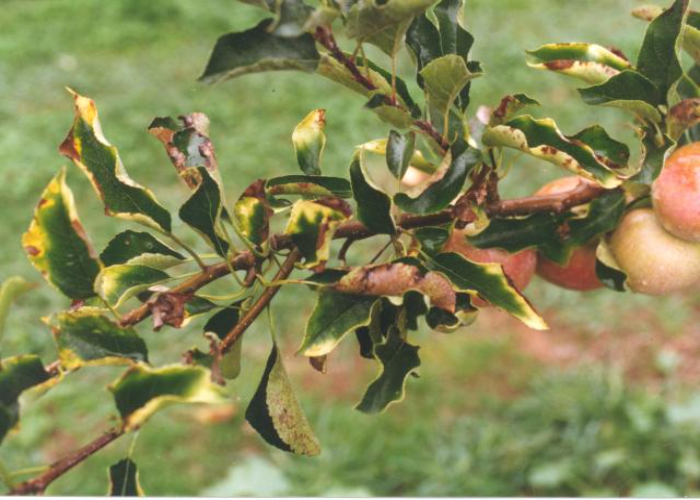
Apple trees suffer from nutrient deficits when soil nutrients are reduced and aren’t replaced. Depending on whatever nutrients are lacking, different symptoms and consequences may manifest.
Nitrogen Deficiency
- Cause: Too little nitrogen in the soil, too much water, prolonged drought, or excessive trimming.
- Signs: Symptoms include stunted growth, smaller fruits, and yellowing or light green foliage.
- Effects: Foliage growth slows, fruit output and quality suffer, and resistance to pests and diseases rises.
Phosphorus Deficiency
- Cause: Inadequate phosphorus in the soil, high soil moisture levels, or a low pH value.
- Signs: Growth retardation, dark green or blue-green foliage, and a crimson-purple hue.
- Effects: Lowered fruit yield and quality and slowed root development.
Potassium Deficiency
- Cause: The soil is sandy, there is a lack of organic matter, rainfall is abundant, or potassium is deficient.
- Signs: Symptoms include leaf tip burn, leaf cupping, and brittle stems and branches.
- Effects: Smaller, lower-quality fruit, more vulnerability to pests and disease, and less resistance to the cold.
Calcium Deficiency
- Cause: Poor drainage, high soil moisture content, or low pH.
- Signs: Symptoms include curled or wilted young leaves, misshapen fruit, and rotting at the flower ends.
- Effects: Worse insect and disease problems and worse fruit quality.
Magnesium Deficiency
- Cause: Problems with soil pH, soil moisture, or magnesium levels.
- Signs: Leaf drop, leaf curling/cupping, and leaf yellowing between veins.
- Effects: Reduced fruit yield, decreased winter hardiness, and increased vulnerability to pests and diseases.
How to Naturally Enrich Soil with Nutrients?
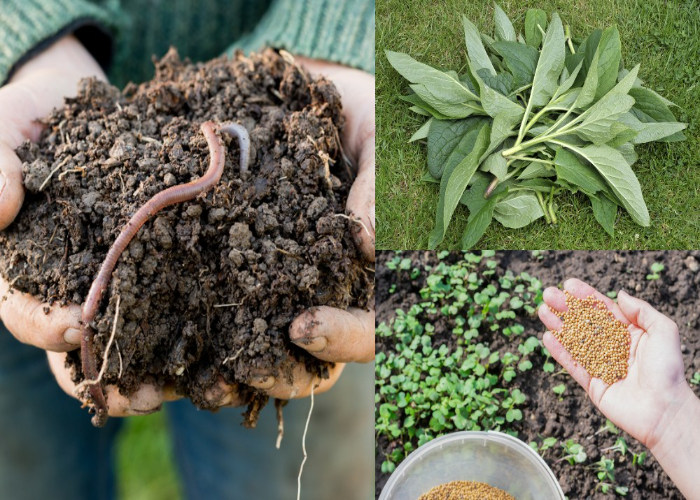
The following are some ways to enrich soil nutrients naturally:
- The greatest and simplest approach to boosting nutrient levels and enhancing soil fertility organically is to add compost, aged manure, or other organic matter.
- Clover and legumes are cover crops that may aid in nitrogen-fixing and soil improvement.
- Mulching with organic matter, like leaves or straw, may improve soil conditions by preventing water loss and promoting nutrient recycling.
- Crop rotation also helps maintain healthy soil by lowering the prevalence of pests and illnesses that may be transmitted via the soil.
- Biochar, a charcoal produced from organic materials, is another additive choice. It has the potential to strengthen the soil and keep nutrients in place.
Using worms is one of my favourite strategies with any of those above. Increasing the number of worms in the soil can hasten the decomposition of organic debris, improve soil aeration, and provide the root zone with nutrient-rich worm castings.
Wrapping It Up
Do apple trees need fertiliser? Fertilising apple trees is a crucial part of orchard management that may boost the trees’ health, increase their yield, and enhance the flavour of the apples they produce. Apple trees need nitrogen, phosphorus, and potassium, the three major macronutrients, for optimal growth and development.
The optimum absorption of nutrients and the avoidance of either deficiency or excess depend on timely and adequate fertiliser application. Commercial fertilisers aren’t the only option for boosting soil nutrients; organic approaches like soil amendments may be just as effective. If you want your trees to be healthy and productive, you must monitor the soil’s nutrient levels and fix any problems immediately.
There are a few things to remember while fertilising an apple tree. To begin, consistent fertilisers are required for feeding apple trees due to their high nutrient needs. Second, apple trees benefit most from fertilisation in the early spring before their leaves fully expand. Last but not least, it matters what kind of fertiliser you use. A high-nitrogen, low-phosphorus fertiliser is ideal for an apple tree.
Frequently Asked Questions (FAQs)
What Is the Ideal Temperature for Planting Apple Trees?
They can survive in temperatures as low as -30 degrees Fahrenheit but prefer temperatures below 90. However, apple trees can’t bear fruit unless they get enough cold hours throughout the winter. Apple trees thrive in mild winters and warm summers, between 32 and 45 degrees Fahrenheit.
What Kind of Soil Does an Apple Tree Thrive in The Most?
Apples grow best on soil with a pH range of 5.8 to 7.0, slightly acidic to neutral. The growth of trees and fruits suffers due to the soil’s extreme acidity or alkalinity. Before planting, it is critical to work to raise the pH of acidic soils by introducing lime into the soil.
How to Grow an Apple Tree in a Warm Climate?
It is essential to provide young apple trees with consistent watering until they have become completely established. Water mature trees thoroughly at least once or twice weekly in dry western climates. Those who grow in the desert may need to water their plants more regularly. Around the trees, use mulch to help retain moisture in the soil.
How Can I Encourage Quicker Growth in My Apple Trees?
As the tree ages, you’ll need to give it more fertiliser to keep it thriving. Applying one pound of 21-0-0 fertiliser, for instance, in the second year of a fruit tree’s life, is a good illustration. In the third year, apply 1.5 pounds of the same fertiliser for feeding apple trees. After that, fertilise it annually by adding one pound of it.
Do Apple Trees Benefit from Urea?
In the early post-flowering stage, the usual practice is spraying apple trees with a 0.5% urea solution. When this process is performed multiple times, the amount of chlorophyll and total nitrogen in scattered tree leaves is much higher than in the leaves of non-sprayed trees. However, leaf harm might result from excessive focus.

![How To Feed Your Apple Trees With Nutrients [Fertilisation Guide] Looking for ways to fertilise your apple trees? Check out our key guidelines and learn how to enhance fruit yield and maintain the tree's health.](https://www.thearches.co.uk/wp-content/uploads/Looking-for-ways-to-fertilise-your-apple-trees-Check-out-our-key-guidelines-and-learn-how-to-enhance-fruit-yield-and-maintain-the-trees-health.jpg)



